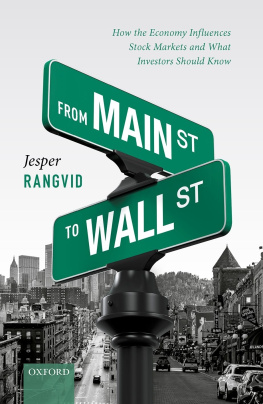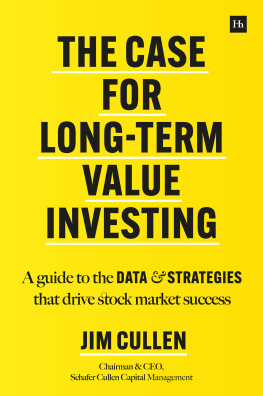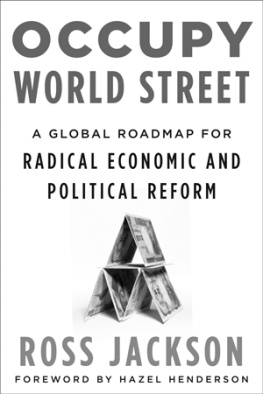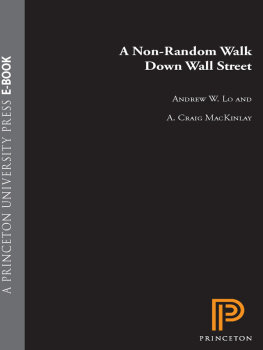From Main Street to Wall Street

Great Clarendon Street, Oxford, OX2 6DP, United Kingdom
Oxford University Press is a department of the University of Oxford. It furthers the University's objective of excellence in research, scholarship, and education by publishing worldwide. Oxford is a registered trade mark of Oxford University Press in the UK and in certain other countries
Jesper Rangvid 2021
The moral rights of the author have been asserted
First Edition published in 2021
Impression: 1
All rights reserved. No part of this publication may be reproduced, stored in a retrieval system, or transmitted, in any form or by any means, without the prior permission in writing of Oxford University Press, or as expressly permitted by law, by licence or under terms agreed with the appropriate reprographics rights organization. Enquiries concerning reproduction outside the scope of the above should be sent to the Rights Department, Oxford University Press, at the address above
You must not circulate this work in any other form and you must impose this same condition on any acquirer
Published in the United States of America by Oxford University Press
198 Madison Avenue, New York, NY 10016, United States of America
British Library Cataloguing in Publication Data
Data available
Library of Congress Control Number: 2020950664
ISBN 9780198866404
ebook ISBN 9780192636287
DOI: 10.1093/oso/9780198866404.001.0001
Printed and bound in Great Britain by
Clays Ltd, Elcograf S.p.A.
Links to third party websites are provided by Oxford in good faith and for information only. Oxford disclaims any responsibility for the materials contained in any third party website referenced in this work.
Acknowledgements
A number of people have helped me in the writing of this book. My deepest thanks go to my colleague at Copenhagen Business School, Henrik R.-Hansen, who carefully read the complete manuscript, and reread many parts, providing a number of great comments. Another good colleague at CBS, Lasse H. Pedersen, also helped me at different stages of the process with suggestions and advice. Three anonymous reviewers at Oxford University Press gave useful feedback that helped improve the manuscript. I would also like to thank my coauthors on research papers that I cite in this book, but also my many other coauthors. The cooperation I have had with you throughout the years have helped me sharpen my arguments and my understanding of finance.
This book relies on the data. I decided early on that would I strive to base the book mainly on freely-available data, such that all readers can source the underlying data should you wish to do so. Thanks go to academics who collect data and make them available to the rest of us. It is a tremendous and highly valuable work that is sometimes not appreciated enough. In this book, I rely particularly on data from the Robert J. Shiller database, the Jorda et al. (2019) database, the Barro-Ursua (2008) database, and the Kenneth R. French database, as well as data from the St. Louis Fed, the World Bank, OECD, and other public authorities that make macroeconomic and financial data available.
I would also like to thank the staff at Oxford University Press for answering all my questions and helping me turn this into a real book.
Finally, a huge hug to my nearest onesBea, Marie, and Mathiasfor all your constant support. Without you, life would not be even remotely as fun and enjoyable as it is.
Contents
From Main Street to Wall Street analyses the relation between economic activity and stock returns. Its main point is that economic activity is an important driver of returns.
Economic activity contains a long-run and a short-run component. The long run refers to many years, even decades. The short run to days, months, quarters, or a couple of years. In its discussion of the relation between economic activity and financial markets, From Main Street to Wall Street distinguishes between the long-run relation and the short-run relation.
In the long run, economies grow. The rate at which an economy grows in the long run is the determinant of whether a country becomes rich or poor, whether an economy prospers or not. Expectations of developments in economic activity in the long run will also help us in formulating expectations for returns from financial assets in the long run. When twenty years old Sarah asks how much she should save for retirement, i.e. after many years, the answer will depend on the returns she can expect from her savings. And, these returns will in turn depend on how fast we expect the economy to grow in the long run. Parts of the book describe the historical long-run relations between economic activity and stock returns.
In the short run, economic activity fluctuates. Sometimes even substantially so. There are years when the economy is booming, unemployment is low, and times are good. At other times, in recessions, economic activity contracts, people are laid off, and times are bad. The recurrent alternations between good and bad times is the business cycle.
Economic activity and the stock market share common business-cycle characteristics. The level of economic activity and the value of stocks rise and fall jointly through the business cycle. In order to understand why stock returns are sometimes high and why they are sometimes low, we need to understand business-cycle fluctuations in economic activity. Part deals with this.
When we understand how economic activity relates to financial assets in the long run and across business cycles, we are in a better position to formulate reasonable expectations for future movements in economic activity and returns on financial assets. Parts deal with this, i.e. how we can use our knowledge of the historical facts to forecast economic activity and returns in the short and the long run.
The final part, a short one, summarizes a few practical implications for investors.
.
Table 1.1 From Main Street to Wall Street: Outline
| Part : | Growth and returns: Basic definitions and stylized facts |
| Part : | Economic growth and stock returns in the long run |
| Part : | Economic growth and stock returns during the business cycle |
| Part : | The prospects for economic growth |
| Part : | The prospects for returns |
| Part : | Practical investment advice |
Part I. Growth and returns: Basic definitions and stylized facts
The first part of the book, outlined in analyses the rate at which economies have grown in the past, distinguishing between aggregate economic growth and growth in per capita economic activity. Economic growth is important because it influences peoples standard of living. People living in rich countries, i.e. countries that have experienced many years of high economic growth, on average live longer and are better educated. Economic growth is also important because it affects asset markets, the theme of this book.
Table 1.2 Part I: Long-run growth and returns: Definitions and stylized facts











